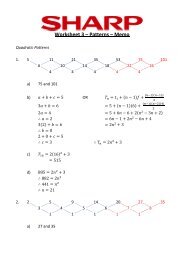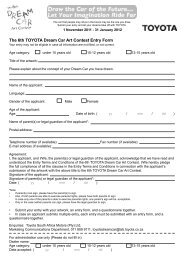curriculum and assessment policy statement (caps) - Department of ...
curriculum and assessment policy statement (caps) - Department of ...
curriculum and assessment policy statement (caps) - Department of ...
- No tags were found...
You also want an ePaper? Increase the reach of your titles
YUMPU automatically turns print PDFs into web optimized ePapers that Google loves.
Content Area Content Clarification / Notes / Activities/Examples Recommended ResourcesRecognise <strong>and</strong>identify the numbersymbol <strong>and</strong> thenumber nameKinaesthetic‣ The teacher draws 10 circles on the playground. Write numbers insidethe circles. The teacher calls a number <strong>and</strong> a learner throws his beanbag into the circle nominated.‣ The learner throws his/her bean bag into the circle shown on the dot<strong>and</strong>/or picture card shown by the teacher.‣ The learner throws his/her bean bag into the circle shown on thenumber symbol card shown by the teacher.‣ Proceed by using the number name cards the same way.‣ Learners throw the same number <strong>of</strong> bean bags written inside thecircle, into the drawn circle e.g. if the number 5 is written inside thecircle the learners throw 5 beanbags into the circle.Semi-concrete using 2-D shapesLet’s play a game:‣ The teacher writes the number name on one side <strong>of</strong> a card <strong>and</strong> writes.the number symbol on the other side <strong>of</strong> the card involving numbers1 to 10 (Use a few sets).‣ Learners “read” the number name <strong>and</strong> guess the number symbol.‣ They turn the card over <strong>and</strong> correct themselves.10 beanbagsDrawn circles in the s<strong>and</strong>/ground or on thefloor.A set <strong>of</strong> number cards that involve number 1-10Cards that involve numbers1-10 with the number name on one side <strong>and</strong>the number symbol on the other side. (Make afew sets so that each learner have his/her owncard).ApproximateDurationSuggested FormalAssessmentContinuedOrdinal Numbers • Introduce ordinal numbers - first, second, third, up the sixth‣ This concept is best developed over time <strong>and</strong> through the use<strong>and</strong> labelling <strong>of</strong> natural situations as they occur in the classroome.g. lining up to go outside “Siya is first, Helen is second .......”Kinaesthetic‣ Let learners run a race. Who came first, who came second, whocame last?1 dayPlay a game – “Which one is it”?‣ Ask five learners to sit in a row on five chairs.‣ The teacher says: “I`m thinking <strong>of</strong> one <strong>of</strong> these learners. Thelearner is wearing a red jersey.”‣ Starting with the learner sitting in front, she moves along the row,touches each learner <strong>and</strong> asks: “Is it the first, the second, thethird......... learner?Let 5 learners st<strong>and</strong> on the steps outside. The teacher places the correctnumber symbol card under each child on the steps.Show me which learner is st<strong>and</strong>ing on the:‣ First step.‣ Second step.‣ Third step etc.The learner on the first step holds up the number symbol card up only afterFive chairsA set <strong>of</strong> number symbol cards that involve thenumbers 1 to 10Improvise if there are no steps111 | P age
















